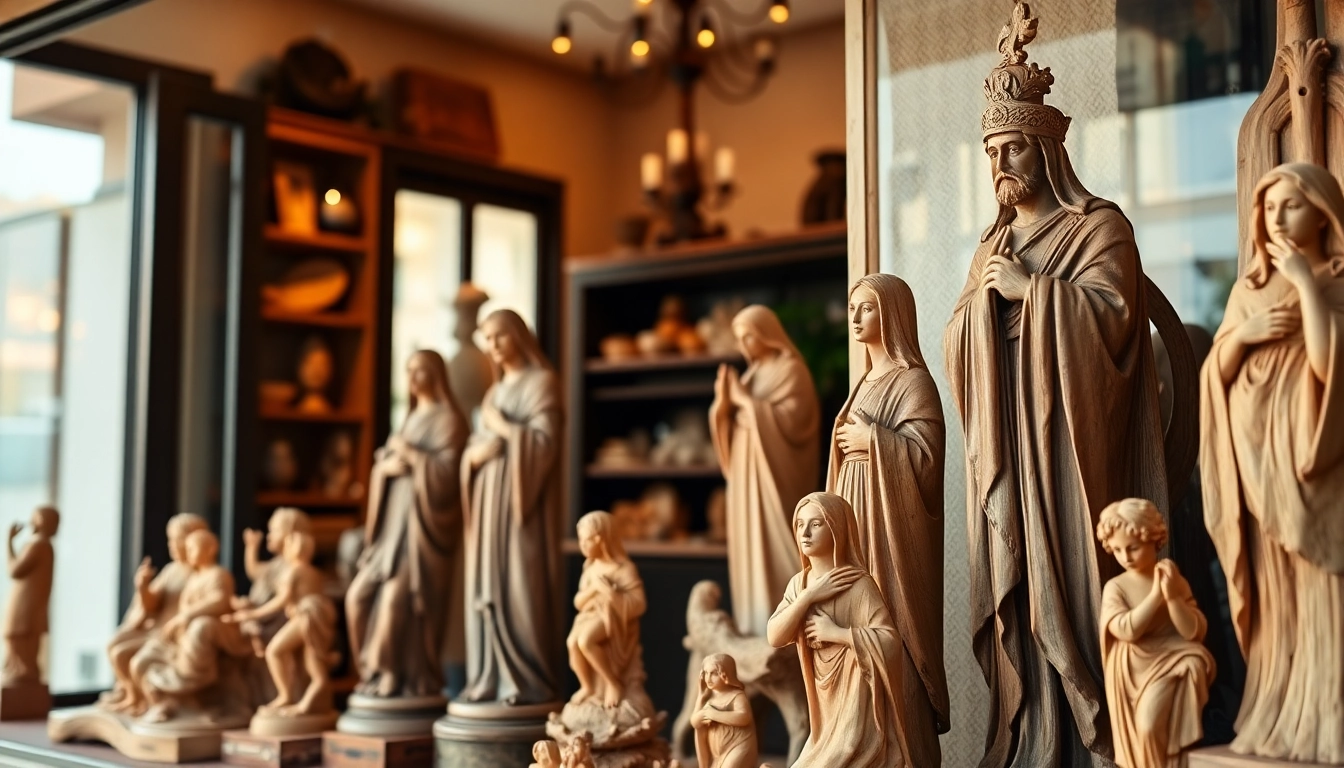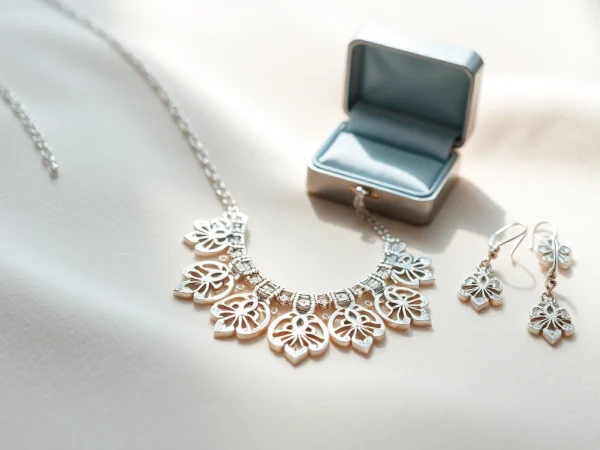Artistry in Olive Wood Carvings: A Deep Dive into Handcrafted Treasures
Understanding Olive Wood Carvings
What are Olive Wood Carvings?
Olive wood carvings are intricate artistic creations crafted from the wood of olive trees, renowned for their durability, beauty, and rich history. These pieces range from decorative sculptures to intricate religious icons, showcasing the skillful craftsmanship of artisans, especially those from the Holy Land. Each carving is unique, carrying the natural patterns and colors inherent in olive wood, which are amplified by the artisan’s craftsmanship. At the heart of their appeal is not only their artistic value but also their spiritual and cultural significance, making olive wood carvings a cherished item for many collectors and spiritual individuals alike.
Historical Significance of Olive Wood Carvings
The history of olive wood carving is deeply rooted in the cultural and religious traditions of the Middle East, particularly in Palestine. Olive trees have been a staple in the region for thousands of years, with their wood being used for various purposes, including religious and artistic endeavors. Historically, olive wood carvings were not only practical items but also held significant symbolism; they were often used in churches and homes to convey spiritual narratives and beliefs. As Christianity spread, the demand for olive wood carvings increased, especially after the establishment of Bethlehem and Jerusalem as sacred cities. Today, many artisans continue to preserve this tradition, passing techniques down through generations.
Unique Characteristics of Olive Wood
Olive wood is distinctive for several reasons. First and foremost, it possesses a unique aesthetic quality with its rich golden and brown hues, often highlighted by darker streaks. This natural beauty is prized by artisans and adds a layer of elegance to each carving. The wood is also known for its density and strength, making it suitable for detailed work that can last for generations. Moreover, the characteristic grain patterns are not only beautiful but also unique to each piece, ensuring that no two carvings are alike. These qualities make olive wood a favored material for both functional items and decorative art.
Different Types of Olive Wood Carvings
Religious Icons and Their Symbolism
In the realm of olive wood carvings, religious icons hold a prominent place. These icons, often depicting important figures from Christianity such as Jesus, Mary, and various saints, are not merely artistic expressions but also objects of devotion. The symbolism embodied in these carvings is profound; for instance, a carving of the Nativity scene represents the birth of Christ, evoking feelings of hope and joy. Artisans put a considerable amount of effort into ensuring that these icons convey not just physical likenesses but also the spiritual essence of the figures they represent. Additionally, many of these carvings are used in religious practices, serving as focal points for prayer and reflection.
Home Decor Items Crafted from Olive Wood
Olive wood also lends itself beautifully to the creation of home decor items that meld functionality with artistry. Items such as bowls, sculptures, and decorative plates showcase the wood’s natural beauty and craftsmanship. These pieces can serve practical purposes, such as serving dishes, or be used to enhance the aesthetic of living spaces. The warm tones of olive wood can bring a touch of nature indoors, creating an inviting atmosphere. Furthermore, many artisans create thematic decor centered around religious or cultural motifs that resonate with their audience, thus adding a narrative depth to the items.
Olive Wood Functional Art and Kitchenware
Beyond decorative aspects, olive wood is highly sought after for kitchenware due to its durability and non-porous nature. Items like cutting boards, utensils, and bowls made from olive wood are not only functional but also stylish, often favored by home chefs and cooking enthusiasts. The density of olive wood makes it resistant to knife marks and wear, while its natural oils help prevent moisture absorption, thus enhancing longevity. Furthermore, many artisans enhance these functional pieces by incorporating artistic elements, making them works of art in their own right.
The Art of Crafting Olive Wood Carvings
Traditional Techniques Used by Artisans
The art of crafting olive wood carvings has been honed over centuries, with artisans employing traditional techniques to bring their visions to life. Most notably, the process begins with selecting high-quality olive wood blocks, often sourced from sustainably managed groves. Once the wood is acquired, artisans use hand tools to chisel, carve, and shape the figures, often relying on ancestral knowledge passed through generations. The meticulous nature of this craft allows artisans to add intricate details that highlight the characteristics of the wood and create depth within each piece. This labor-intensive process not only showcases the skill of the artisan but also imbues each carving with a story and a sense of connection to its origins.
Modern Innovations in Olive Wood Carving
While traditional techniques play a significant role in olive wood carving, modern innovations are also shaping the craft. Some artisans now incorporate new tools and technologies, such as CNC machines, to create more precise designs or replicate complex patterns. This fusion of old and new techniques allows for the creation of both classic and contemporary designs, appealing to a broader audience. Additionally, modern marketing strategies have opened new avenues for artisans, allowing them to reach global markets and share their creations with a wider audience. However, the emphasis on maintaining traditional craftsmanship persists, ensuring that the integrity of the art form is upheld.
Choosing Quality Olive Wood Carvings
When selecting olive wood carvings, it is essential to consider quality. Authentic olive wood pieces should have a smooth finish and exhibit the distinctive grain patterns known to the material. The weight of the carving is also a good indicator; high-quality olive wood is dense and will feel substantial in hand. Moreover, looking for artisanal markings or certifications can ensure that you are purchasing a legitimate handmade product, rather than a mass-produced item. Supporting local artisans not only encourages the continuation of this cultural craft but also guarantees that your purchases are ethically sourced and contribute to the livelihoods of skilled craftsmen.
Caring for Olive Wood Carvings
Maintenance Tips for Longevity
Caring for olive wood carvings is essential to ensure their longevity and preserve their beauty. To maintain the integrity of the wood, it is advisable to routinely apply a food-safe mineral oil or beeswax to replenish the wood’s natural oils. This treatment not only enhances the shine but also acts as a barrier against moisture and staining. When cleaning, it is best to use a damp cloth rather than soaking the wood in water, which can lead to warping or cracking. Creating a regular maintenance routine can help keep your olive wood carvings in excellent condition and prolong their lifecycle.
Common Mistakes to Avoid
While caring for olive wood, there are several common pitfalls to avoid to ensure its preservation. One major mistake is exposing the carvings to direct sunlight for extended periods, as this can cause fading and deterioration of the wood. Another frequent error is neglecting to apply oil treatments, which can lead to dryness and cracking. Additionally, using harsh chemicals or soaking the carvings in water can significantly damage the wood structure. Educating oneself on proper care techniques can prevent these issues and maintain the aesthetic and functional integrity of the pieces.
Restoring Damaged Olive Wood Art
Even with the best care, olive wood carvings can sometimes suffer damage, whether due to accidental drops, wear over time, or environmental conditions. Restoration is possible and can often be performed at home. Minor scratches can be addressed by lightly sanding the affected area and reapplying oil to match the surrounding finish. For deeper cracks or damage, professional restoration services may be advisable to maintain the integrity of the piece. Knowledgeable restorers can often successfully repair even significant damage, allowing the artwork to regain its former beauty.
Where to Buy Authentic Olive Wood Carvings
Online Marketplaces for Olive Wood Products
The digital age has transformed the way collectors and enthusiasts access olive wood carvings. Numerous online marketplaces specialize in authentic carvings from the Holy Land, offering a wide variety of items at every price point. Websites that focus on handmade crafts often highlight individual artisans, presenting a curated selection of carvings along with the stories of their creators. By purchasing through reputable online channels, collectors can ensure they are supporting artisans directly and obtaining genuine, handcrafted pieces.
Local Artisans and Workshops in the Holy Land
For those wishing to experience olive wood carving in its most authentic form, visiting local artisans in Bethlehem, Jerusalem, and surrounding areas is invaluable. Many workshops offer tours that provide insight into the craftsmanship behind each piece, allowing visitors to witness the carving process firsthand. These experiences not only create a deeper appreciation for the art form but also foster direct connections with artisans, ensuring that purchases contribute meaningfully to the local economy. Additionally, acquiring pieces directly from workshops can offer opportunities to negotiate prices and explore custom options tailored to individual preferences.
Choosing Ethical Sources for Your Purchases
In an era where ethical sourcing is increasingly crucial, it is essential to identify suppliers committed to fair practices within the olive wood carving community. Supporting artisans who utilize sustainable harvesting methods and ensure fair wages for workers not only upholds the integrity of the art form but also helps preserve traditional craftsmanship. Seeking out certifications or affiliations with recognized ethical trade organizations can provide assurance that your purchases positively impact the local communities from which these items originate.










